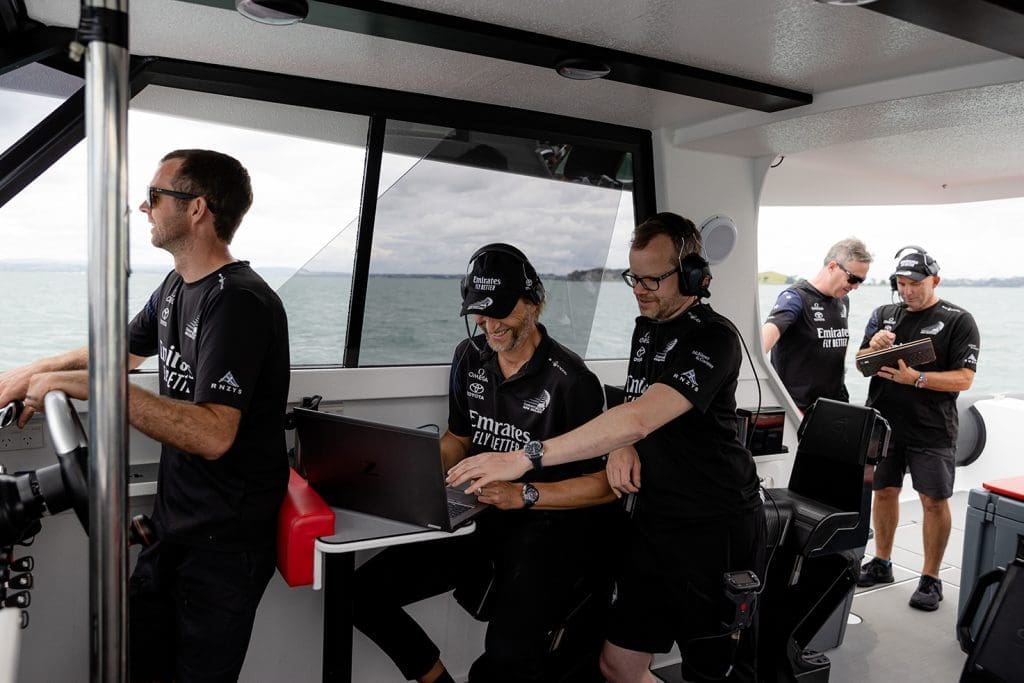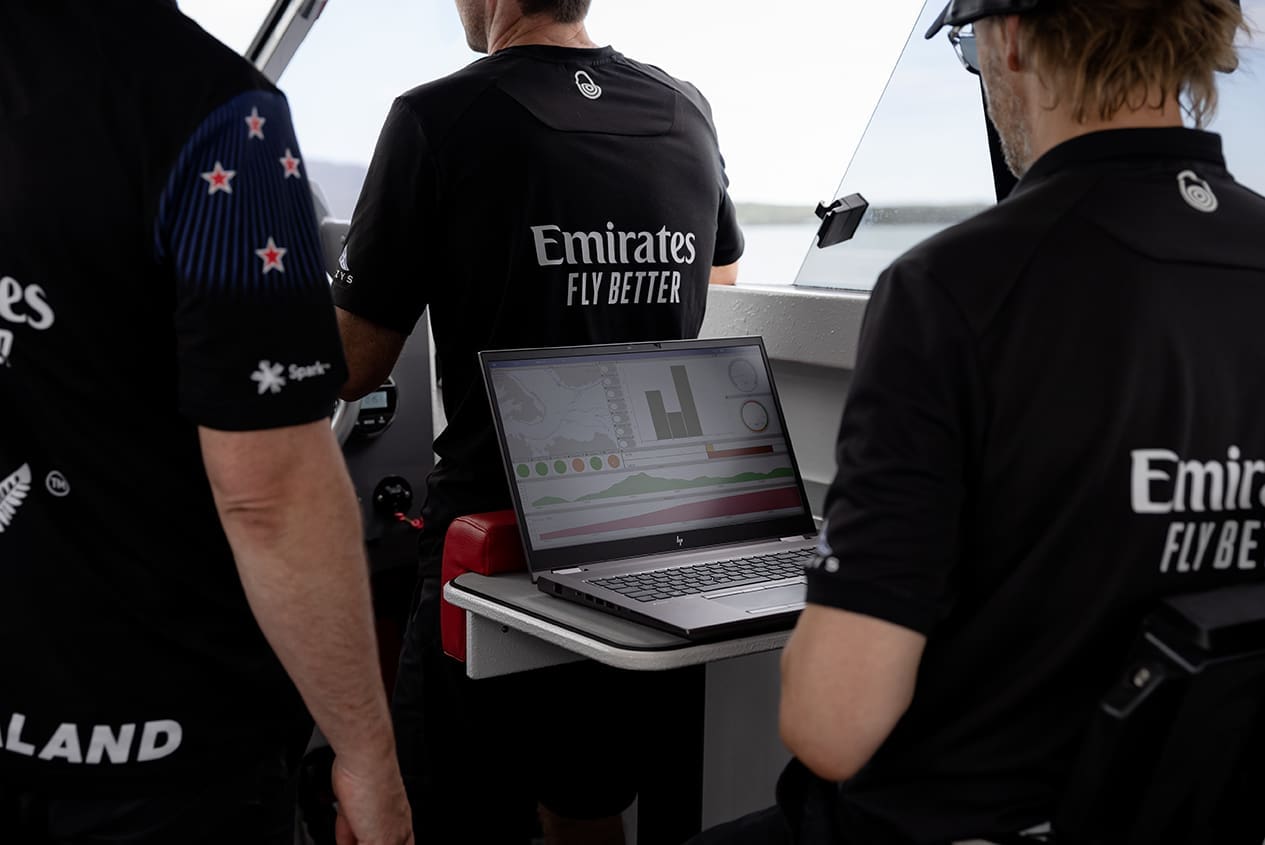A Sailing Future Powered By Tech
How do you win the America’s Cup? You innovate, innovate, innovate of course. Standing still with the same ideas and tech that won it for you before hasn’t won it again – at least certainly not in the last fifty years. But still, the America’s Cup is a yacht race, right? So, surely technology must take a back seat to the actual boat designs?
Boat race, schmoat race! The America’s Cup nowadays is about tech first and foremost, everything else is secondary – at best. “The team that wins the technology race wins the sailing race,” says Marty Yates, and he should know as he’s Emirates Team New Zealand’s IT manager. “Whether it’s cloud-based or on-site, everyone is now using the latest technology to get the edge over the competition. That extra 1% is critically important. The America’s Cup has been described as the Formula One of boat racing, and just like in Formula One, it’s those hundredths of a second that make all the difference.”
Of course, new technology in the America’s Cup is nothing novel, every regatta seems to unleash a suite of fresh ideas and techniques to the sailing world – and often the rest of the world too. And the improvements are relentless, even the extraordinary AC50 catamarans that set the world alight with their incredible speed in 2017 have actually been outpaced with this year’s AC75 monohulls – and with that increase in pace comes a commensurate demand for even greater improvements. Because your opponents are going faster than before too.

So, all the race teams have technical teams with them searching high, low and wide for opportunities to find any possible advantage over their competition. You can see them in the chase boats staring into their computer screens, searching for that next elusive 1% improvement. “When we’re sailing on race days, there are six engineers on the chase boat, all streaming data live from the yacht – monitoring performance, structure, hydraulic, electrical information and also debugging, monitoring the strains and loads from the yacht,” Dan Bernasconi, Head of Design for Emirates Team New Zealand explains. “We’re in constant communication on two-way radios with sailors on the yacht, making adjustments to electrical and hydraulic systems on the yacht, making suggestions on choreography, like lowering the foil at different times, or changing the angle on the gybe.”
Thanks to campaign sponsor HP New Zealand, Emirates Team New Zealand has a fleet of HP Z Workstations back at the base to crunch all the data collected by cameras and sensors mounted on the boats which help to isolate some improvement opportunities – but the human observations aren’t overlooked either. The technical team’s notes on how the race boat’s sail, foils and hull reacted to their adjustments and/or the natural weather and tidal vagaries as they see them used to be written up on a clipboard – but not anymore. “Things have come a huge way since then,” Bernasconi observes. “Things that used to take us until the next day to feedback and address, now with HP ZBook devices in the chase boats we can do it in five minutes. Because we can analyse data in real time on the boat, we can debrief while it’s still fresh in everyone’s minds, for maximum efficiency. And because it’s all in real time, we can spot and prevent failure before it happens.”

But on the deck of a boat splashing about on top of a sea of corrosive salty wet stuff is probably one of the least safe places to operate high-tech kit – as the unfortunate American Magic demonstrated during the Prada Cup. So, practically-speaking any laptop Emirates Team New Zealand uses on its chase boats is going to have to be as tough and durable as it is powerful and high-tech – but so far the HP ZBooks have stood up to the challenge. “Our laptops monitor bow to stern,” Bernasconi says, “so while the machines are high-performance it’s also important how rugged they are, being able to capture and process that data out on the chase boat. We need laptops that aren’t going to seize up in tough conditions.” And right in the middle of those tough conditions might be just the place where the guys from Emirates Team New Zealand find that all-important 1% improvement they’ll need to retain the America’s Cup.

